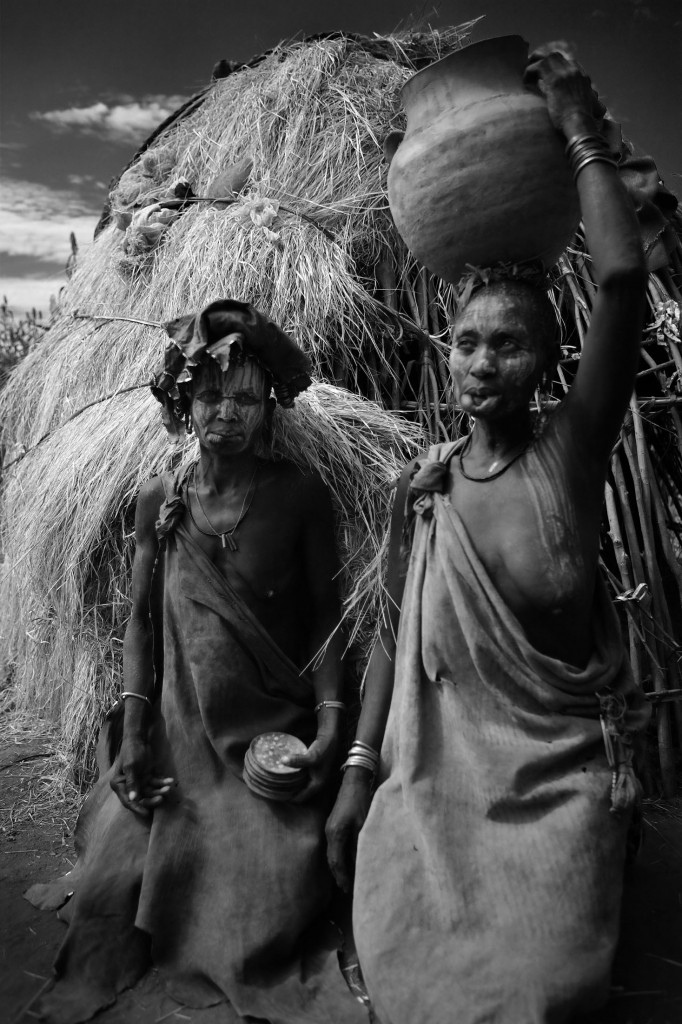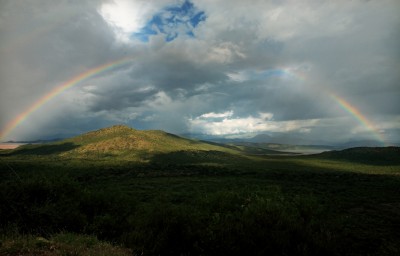Two Women, Two Tribes, and a Journey of a Lifetime is a 9-part series penned by Lim Ka Ea about her one year stint in Addis Ababa, Ethiopia where she accompanied her husband on his 9th humanitarian mission. No stranger to travel and humanitarian missions herself, she learned that Ethiopia is not really Africa and Africa is not really all about national parks or long distance-runners. She also learned that being a “tai-tai” is so overrated unless there is another “tai-tai” to get into mischief with. This 9-parter tells the story of how two “tai-tais?” explored Ethiopia and discovered their life as both an individual and a woman. This weekly series started with Part I: My first encounter with Africa, Part II: The faces, sounds and smell of Addis Ababa, Part III: The gift of a kindred spirit and Part IV – Getting in synch with nature.
Part V – Hardships and friendship
I’ve never really told Irada how I felt about this because at some level, I understand that a photographer has to take certain risks in order to capture that rare moment. Jalalem, on the other hand, was not as understanding. He was very much annoyed by our behaviour and possibly perceived them as parsimonious. In the beginning, Jalalem would often ignore Irada’s urgent signal to stop the car when she saw something photo-worthy. We didn’t know whether it was his lack of urgency, understanding of English or he simply established that if we were not going to pay, he was not going to bother stopping.
My own frustration was of a completely different nature. It was extremely challenging for me to try to understand things in order to document our journey. Despite the fact that talking is free of charge here, it was difficult to communicate with some of the people we met since we did not have a translator. I am sceptical as to the accuracy of what had been translated to me by Jalalem and other local people who speak very little English.
In addition to this, the local women are often shy, possibly exacerbated by very low level of education and exposure to the outside world. They hardly spoke a word to us which made it even more difficult to interview them. If this was not the case, then very often, men spoke on behalf of them. Some women even shied away from being photographed although I would still approach them to talk to them. I had to raise both arms up with my palms wide open to reassure them that I had no camera with me.
Closer to the end of our trip, we finally established a better rapport and understanding with Jalalem. He provided us with some useful hints to facilitate our mission. He taught us the local tribal word, Jaala which means “friend”, as a form of greeting, indicating friendship and solidarity. From then onwards, we could not stop screaming Jaala! Jaala! at almost everyone we saw on the way, much to their amusement but to Jalalem’s mortification. He also helped us to trade pictures for candies but this usually worked with children only.

Water and women – the vital sources of life
We were very often chased by half naked children in need of a good scrub, after our car and surprisingly with great speed. Their agility and athleticism were only matched by their vocal chord as they screamed Highland! Highland! which to the unfamiliar ears, sounded like Thailand. Perhaps that is one of the reasons why Ethiopia has such a big pool of great runners.
Some boys even tried to attract our attention by doing a sort of local dance consisting of jumping jacks executed from a squatting position. Trust me, it didn’t look easy and the Russians may be able to learn a thing or two from these boys. We later learned that due to the scarcity of water, empty plastic bottles or “Highland”, named after one of the popular local brands of bottled water, are in high demand in almost every part of the country. They are used to collect water from the river or even puddles of muddy water left behind by the rain. Forlorn-looking donkeys, used as mobile water tanks, were seen carrying bright yellow plastic jerry cans filled with water.
Local women are a vital source of life, not only because they are mothers, they are also responsible for the difficult task of collecting water. Almost throughout the whole journey, women are often seen walking for miles in order to reach water points or rivers, which are often completely dried up. Each woman, with a 20-litre jerry can strapped onto their backs, some pregnant and some riped with old age, take their task seriously as they often risk sexual harassment due to long distance of isolated paths taken to reach the water source. Humanitarian organisations have often tried to make sure that new water wells are being constructed as close as possible to their homes in order to avoid such risk.
It is heart wrenching to think that many of these pregnant women probably risk losing their unborn babies and some even their lives while delivering, due to such harsh condition. Reliable statistics have shown that the neo-natal mortality rate in Ethiopia is as high as 51 per 1,000 live births and the maternal mortality rate is at 720 per 100,000 live births.
Many women also suffer from gradual distortion of their backs due to the burden of such brutal weight. We had seen some elderly women walking and bearing the cruelty of life, with their backs bent forward permanently to almost a ninety-degree.
For many of us who never have to submit to such hardship, it boggles the mind to see how many of them could still muster a beautiful smile which weighed more than the weight they carry on their back by a million times.

Arba Minch – “It’s a good sign”
We finally reached Arba Minch at around 4:30pm. Elevated at around 1,600m, it provides a spectacular view of the Rift Valley and nearby lakes from above. The largest city in the south-western part of Ethiopia, Arba Minch, means forty springs in Amharic, is indeed more developed and sophisticated than other places we have been outside the capital. It is well-known for three things, Nechisar National Park, Lake Abaya and Lake Chamo.
Our first experience with Lake Abaya and Chamo were truly magical. The lakes are divided by Nechisar National Park in the middle, also named fondly as the Bridge of Heaven, provides a startling contrast between the salmon pinkish water of Lake Abaya and the clear blue water of Chamo. The former’s water colour is a result of elevated natural concentration of suspended ferrous hydroxide.
What further amazed us was a rainbow, perfect in its shape, size and colour, arching over the lakes from one end to the other. If heaven really exists, then this was how I would have imagined it. Irada, who was previously apprehensive about her ability to obtain good photographs, told me that the rainbow was a good sign. She once gave me a brief lesson in photography and as I remember it well, she told me that to take a fantastic photograph, it often depends on three things; luck, lighting and composition. Anyone can hone the necessary skills or techniques to become a photographer but without luck, even the best photographers will not be able to secure an outstanding photograph. To her, it was purely luck that we had arrived in Arba Minch with this rare gift of a magnificent view.
After being deprived of fresh seafood in Addis Ababa, we feasted on grilled tilapias caught from the lakes. Nothing had ever tasted so good throughout the time I had spent in Addis Ababa. The fact that we were both starving could also be a contributing factor. The beers were nicely chilled and hence provided us with a delightful change from the often lukewarm beers in Addis Ababa due to the power cut.
By 8 pm, we were both sitting in our hotel room, completely bored and missing our family back in Addis Ababa. With no television or radio to provide us with some entertainment, we were engulfed in the complete stillness and silence of the night. With our 5 litres of untouched white wine staring at us from above a cabinet, we unanimously decided to drown our boredom in some alcohol. After several cups of bottoms up, we settled into bed early that night, exhausted but exhilarated at the same time after all the excitement in one day. Perhaps it was the white wine finally working its way through our system. Whatever it was, we sighed in contentment as we turned off the lights and bid each other goodnight.
As I closed my eyes, I thought about our impending camping trip at the Mago National Park with slight trepidation. I think what had worried me most about the journey was the constant warning of the threat of Sleeping Sickness caused by Tsetse flies in Mago. Once bitten, it apparently results in instant coma. But as I finally dozed off, I heard the echo of Irada’s voice saying, “It’s a good sign.” I thought, if the appearance of a rainbow could provide luck to a photographer, I hope it would provide the same for two women at Mago National Park.
Next: Part VI – Our first sighting of a local traditional tribe
Ka Ea used to be a globe trotter. She has lived in Timor Leste and Afghanistan while working as a civic education and human rights officers for the United Nations. She then tried to be a full time housewife in Ethiopia and Cambodia but failed miserably. Now, she works with lawyers and human rights activists by day and watches Discovery Travel & Living by night. She writes for The Malaysian Insider during her dwindling free time. She longs for the day when someone would pay her to travel, eat and write.
Irada Humbatova was born in Azerbaijan’s capital Baku on 12 July 1974. She trained and worked as a midwife from 1994 to 1997, later assisting the International Federation of the Red Cross/Red Crescent with maternal health work by training and supporting traditional birth attendants in rural areas. Since then she has followed her husband on Red Cross missions around the world, developing her love for photography into a passion and profession. Inspired by Africa’s immense beauty and its people’s suffering she moved from art photography to photojournalism. She has since grown to become Reuters’ stringer for Ethiopia and work on assignments for other news outlets and magazines. Irada is currently back in Baku continuing her work with Reuters. She contributes most of the photographs in this series.

Thanks, Ruzaini and Seira.
The rainbow was just magical. It's hard not to believe in the power of creation and be humbled by it.
As always, an enjoyable read. It goes without saying that I envy you KE! And the rainbow photo is brilliant!
Timely posted. Been a long time Ka Ea.
Anyway, thanks for the beautifully accounted journey; I really enjoy it. Seriously, you should get the articles compiled and published in hard copy.